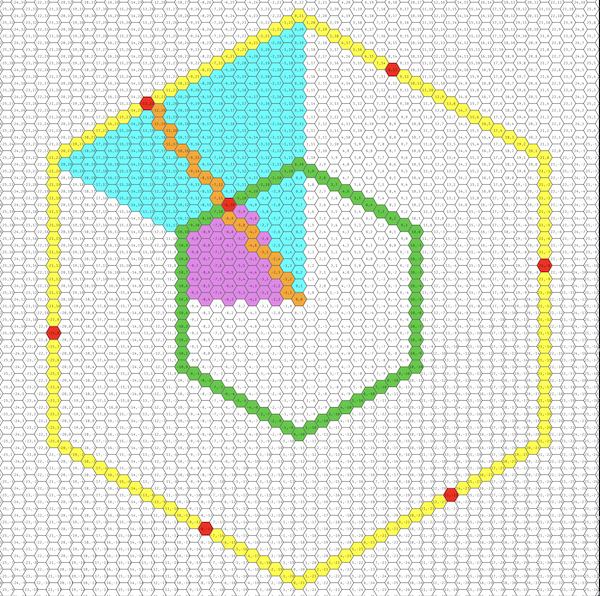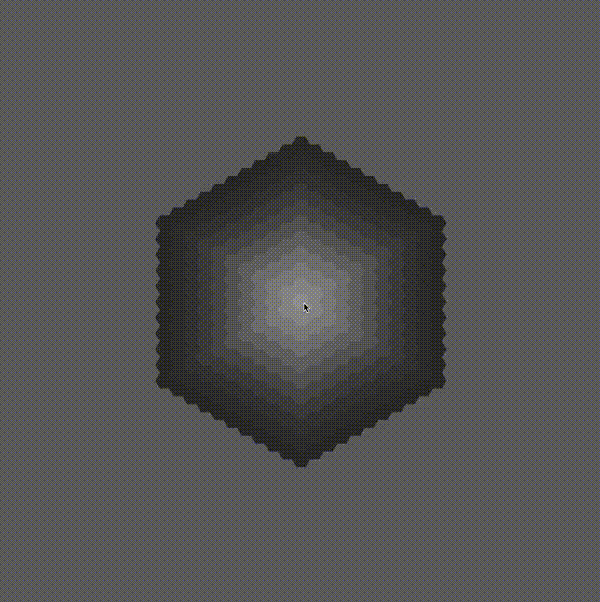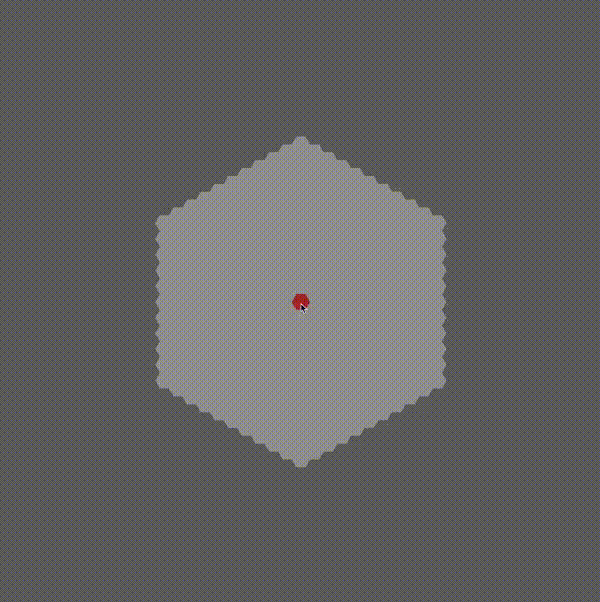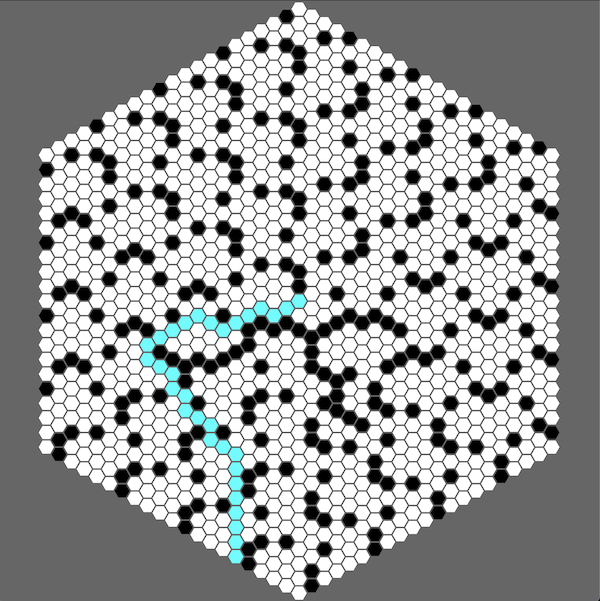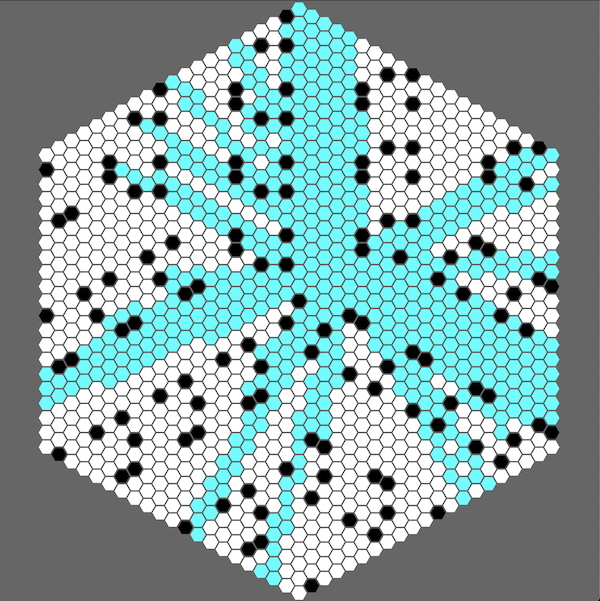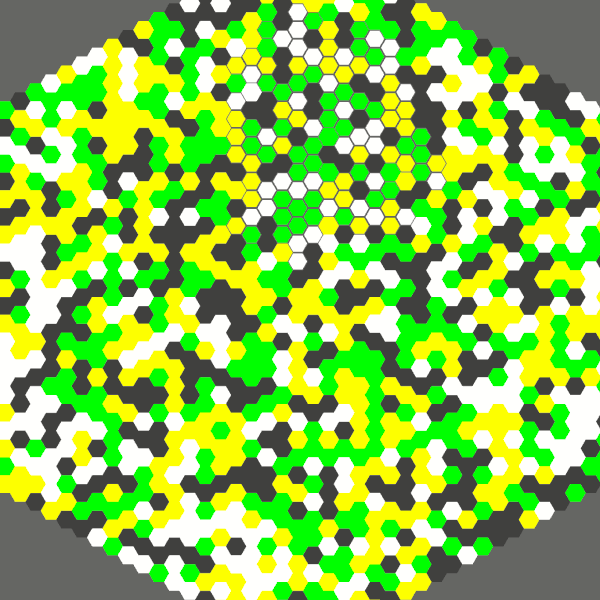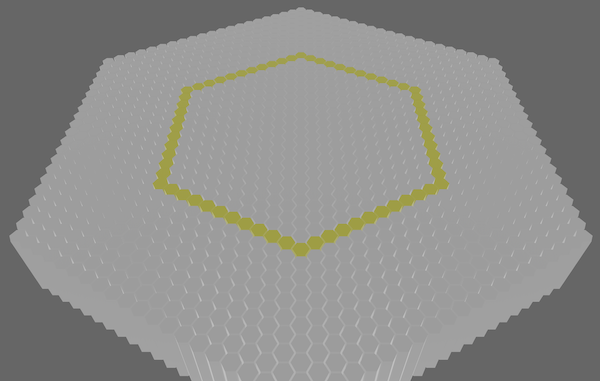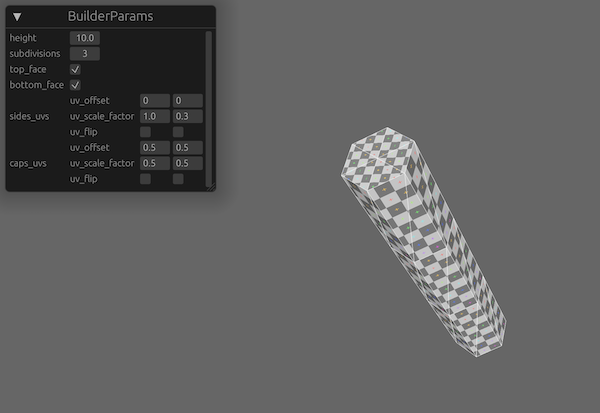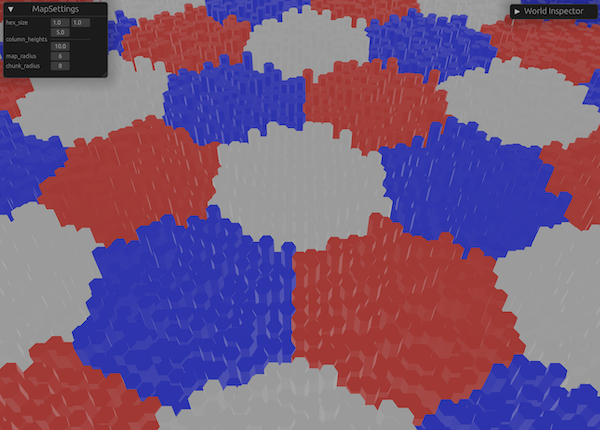Hexagonal tools lib in rust.
Inspired by this
RedBlobGamesarticle and Sander Evers work
This lib allows you to:
- Manipulate hexagon coordinates
- Generate hexagonal maps with custom layouts and orientation
- Generate hexagon meshes (planes or columns)
I made the choice to use Axial Coordinates for performance and utility reasons,
but the [Hex] type has conversion utilities with cubic, doubled and offset coordinates.
See the hexagonal coordinate systems
Installation
Run cargo add hexx in your project or add the following line to your Cargo.toml:
hexx = "0.10"
Cargo features
hexx supports serialization and deserialization of most types using serde,
through the serde feature gate. To enable it add the following line to your Cargo.toml:
hexx = { version = "0.10", features = ["serde"] }
By default Hex uses rust classic memory layout, if you want to use hexx through the FFI or
have Hex be stored without any memory padding, the packed feature will make Hex
repr(C). To enable this behaviour add the following line to your Cargo.toml:
hexx = { version = "0.10", features = ["packed"] }
hexx supports Bevy Reflection through the
bevy_reflect feature. To enable it add the following line to your Cargo.toml:
hexx = { version = "0.10", features = ["bevy_reflect"] }
Features
hexx provides the [Hex] coordinates with:
- Distances
- Neighbors and directions
- Lines
- Ranges
- Rings
- Edges
- Wedges
- Spirals
- Rotation
- Symmetry
- Vector operations
- Conversions to other coordinate systems:
- Cubic coordinates
- Offset coordinates
- Doubled coordinates
- Hexmod coordinates
- Multiple hex resolution
Basic usage
use hexx::*;
// Declare points in hexagonal spaces
let point_a = hex(10, -5); // Equivalent of `Hex::new(10, -5)`
let point_b = hex(-8, 15);
// Find distance between them
let dist = point_a.unsigned_distance_to(point_b);
// Compute a line between points
let line: Vec<Hex> = point_a.line_to(point_b).collect();
// Compute a ring from `point_a` containing `point_b`
let ring: Vec<Hex> = point_a.ring(dist).collect();
// Rotate `point_b` around `point_a` by 2 times 60 degrees clockwise
let rotated = point_b.rotate_cw_around(point_a, 2);
// Find the direction between the two points
let dir_a = point_a.main_direction_to(point_b);
let dir_b = point_b.main_direction_to(point_a);
assert!(dir_a == -dir_b);
// Compute a wedge from `point_a` to `point_b`
let wedge = point_a.wedge_to(point_b);
// Get the average value of the wedge
let avg = wedge.average();Layout usage
[HexLayout] is the bridge between your world/screen/pixel coordinate system and the hexagonal
coordinates system.
use hexx::*;
// Define your layout
let layout = HexLayout {
hex_size: Vec2::new(1.0, 1.0),
orientation: HexOrientation::Flat,
..Default::default()
};
// Get the hex coordinate at the world position `world_pos`.
let world_pos = Vec2::new(53.52, 189.28);
let point = layout.world_pos_to_hex(world_pos);
// Get the world position of `point`
let point = hex(123, 45);
let world_pos = layout.hex_to_world_pos(point);Wrapping
[HexBounds] defines a bounding hexagon around a center coordinate.
It can be used for boundary and interesection checks but also for wrapping
coordinates.
Coordinate wrapping transform a point outside of the bounds to a point inside.
This allows for seamless or repeating wraparound maps.
use hexx::*;
let center = hex(23, -45);
let radius = 5;
let bounds = HexBounds::new(center, radius);
let outside_coord = hex(12345, 98765);
assert!(!bounds.is_in_bounds(outside_coord));
let wrapped_coord = bounds.wrap(outside_coord);
assert!(bounds.is_in_bounds(wrapped_coord));Resolutions and chunks
[Hex] support multi-resolution coordinates.
In practice this means that you may convert a coordinate to a different resolution:
- To a lower resolution, meaning retrieving a parent coordinate
- to a higher resolution, meaning retrieving the center child coordinate
Resolutions are abstract, the only useful information is the resolution radius.
For example, if you use a big grid, with a radius of a 100, you might want to split that grid evenly in larger hexagons containing a 10 radius of coordinates and maybe do operations locally inside of these chunks.
So instead of using a big range directly:
use hexx::*;
const MAP_RADIUS: u32 = 100;
// Our big grid with hundreds of hexagons
let big_grid = Hex::ZERO.range(MAP_RADIUS);You may define a smaller grid you will then divide to a higher resolution
use hexx::*;
const CHUNK_RADIUS: u32 = 10;
const MAP_RADIUS: u32 = 20;
let chunks = Hex::ZERO.range(MAP_RADIUS);
for chunk in chunks {
// We can retrieve the center of that chunk by increasing the resolution
let center = chunk.to_higher_res(CHUNK_RADIUS);
// And retrieve the other coordinates in the chunk
let children = center.range(CHUNK_RADIUS);
// We can retrieve the chunk coordinates from any coordinate..
for coord in children {
// .. by reducing the resolution
assert_eq!(coord.to_lower_res(CHUNK_RADIUS), chunk);
}
}An other usage could be to draw an infinite hex grid, with different resolutions displayed, dynamically changing according to user zoom level.
Usage in Bevy
If you want to generate 3D hexagonal mesh and use it in bevy you may do it this way:
use bevy::prelude::Mesh;
use bevy::render::{mesh::Indices, render_resource::PrimitiveTopology};
use hexx::MeshInfo;
pub fn hexagonal_plane(mesh_info: MeshInfo) -> Mesh {
let mut mesh = Mesh::new(PrimitiveTopology::TriangleList);
mesh.insert_attribute(Mesh::ATTRIBUTE_POSITION, mesh_info.vertices);
mesh.insert_attribute(Mesh::ATTRIBUTE_NORMAL, mesh_info.normals);
mesh.insert_attribute(Mesh::ATTRIBUTE_UV_0, mesh_info.uvs);
mesh.set_indices(Some(Indices::U16(mesh_info.indices)));
mesh
}The [MeshInfo] can be produced from [PlaneMeshBuilder] or [ColumnMeshBuilder]
See the examples for bevy usage
Examples
hexx provides interactive examples showcasing various features:
Hex grid
cargo run --example hex_grid
This example showcases hex ranges, rings, wedges, rotation, and lines
Scroll Map
cargo run --example scroll_map
This example showcases the HexMap struct for scrolling maps
Wrap Map
cargo run --example wrap_map
This example showcases the HexMap struct for looping/wrapping map
A Star pathfinding
cargo run --example a_star
This example showcases the A star algorithm, with an interactive pathfinding between the origin and your cursor. Clicking on tile toggles their availability
Field of view
cargo run --example fov
This example showcases the FOV algorithm, with an interactive range fov around your cursor. Clicking on tile toggles their visibility.
Field of movement
cargo run --example field_of_view
This example showcases the field of movement algorithm, interactively displaying the accessible range of movement around the cursor.
3d columns
cargo run --example 3d_columns
This example showcases the 3d hexagon columns procedural generation
Mesh builder
cargo run --example mesh_builder --features bevy_reflect
This example showcases the hexagon columns procedural generation customization options
Chunks
cargo run --example chunks
This example showcases the hexagon resolution system, allowing to tile coordinates in evenly sized chunks
Merged Chunks
cargo run --example merged_columns --features bevy_reflect
This example showcases how to build a simple hex chunk system with each chunk being a single mesh




